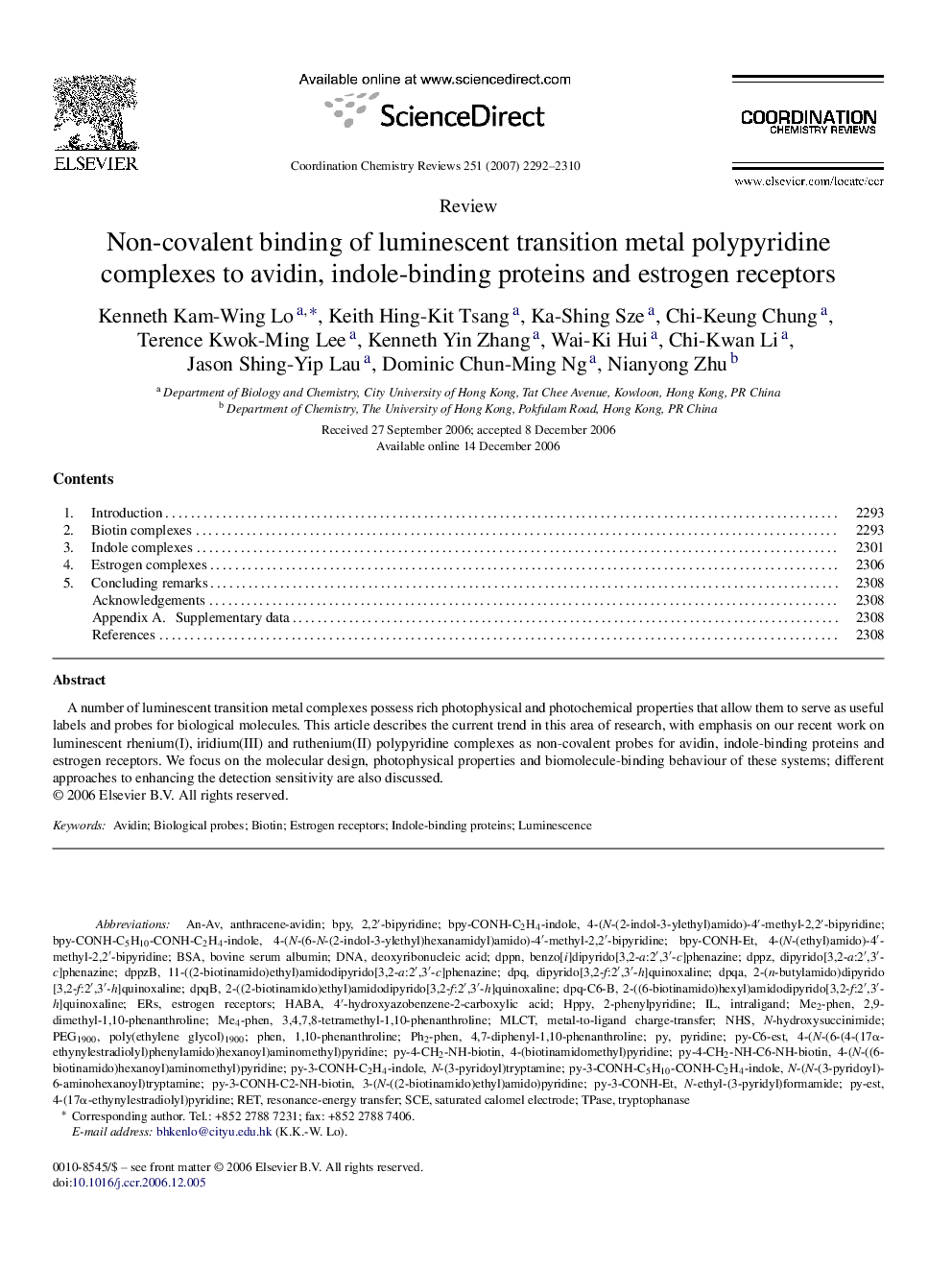| Article ID | Journal | Published Year | Pages | File Type |
|---|---|---|---|---|
| 1299526 | Coordination Chemistry Reviews | 2007 | 19 Pages |
Abstract
A number of luminescent transition metal complexes possess rich photophysical and photochemical properties that allow them to serve as useful labels and probes for biological molecules. This article describes the current trend in this area of research, with emphasis on our recent work on luminescent rhenium(I), iridium(III) and ruthenium(II) polypyridine complexes as non-covalent probes for avidin, indole-binding proteins and estrogen receptors. We focus on the molecular design, photophysical properties and biomolecule-binding behaviour of these systems; different approaches to enhancing the detection sensitivity are also discussed.
Keywords
Related Topics
Physical Sciences and Engineering
Chemistry
Inorganic Chemistry
Authors
Kenneth Kam-Wing Lo, Keith Hing-Kit Tsang, Ka-Shing Sze, Chi-Keung Chung, Terence Kwok-Ming Lee, Kenneth Yin Zhang, Wai-Ki Hui, Chi-Kwan Li, Jason Shing-Yip Lau, Dominic Chun-Ming Ng, Nianyong Zhu,
